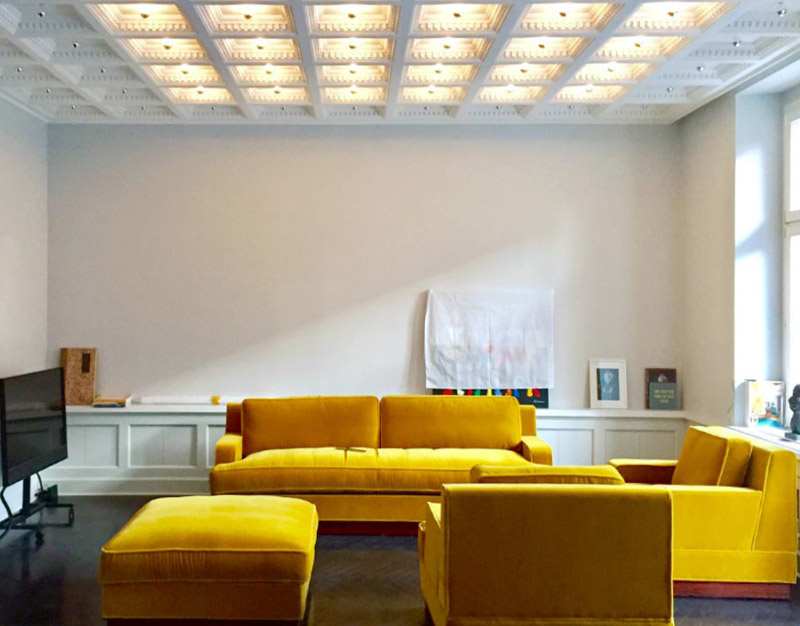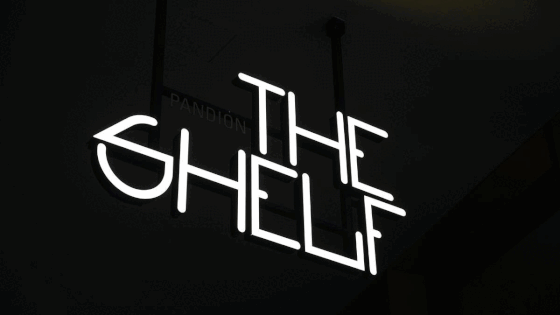Chandelier with 40 light points
Project
Chandelier / 2022
Service
Special lighting construction
Finish
Februar 2022
Technical highlight: the tunable white control adapts the light colour to the natural course of daylight.
According to the designs of two Berlin lighting designers from Jack be Nimble, a chandelier with 40 LED light points and a diameter of 8 metres was created in the inner courtyard of Pandion’s new office building “The Shelf”. The aim was to create a kind of lobby in the outdoor area of the hub. We were commissioned with the development and implementation. Our specially designed LED board provides an impressive clarity in lighting effect and luminosity. And the special highlight: thanks to tunable white control, the light colour adapts to the natural course of daylight.
For the client PANDION, based in Cologne, workspaces are living spaces. Therefore, the office building does not only contain desk workstations. Rather, the office is seen as a living space for personal exchange and efficient work. The focus in the development of the lighting concept was not only on the desk lighting but also on the new lounges and workplaces.
The basic idea of the lighting designers at JACK BE NIMBLE was to connect the interior and exterior spaces and to reverse this. This means no clear separation between outdoor and indoor luminaires. In order for the inner courtyard to function as a meeting place for exchange, floor luminaires and the chandelier are to create this atmosphere in the evening hours. The central source of inspiration for their designs was the minimalist SAMPEI floor lamp by designers Davide Groppi and Enzo Calabrese from Italy.
The construction
On the basis of technical drawings, four levels were sketched, each with 10 cantilever tubes and the corresponding holding sleeves in the body for the tubes. It quickly became clear that the deflection behaviour of the 4m long cantilever tubes could not be determined by calculation, but had to be determined empirically. PSDM then suggested making a solid wood body for sampling, on which they could simulate the bending behaviour of different thick aluminium tubes, each with four different sized luminaire heads – in the backyard of their own workshop. It had to be determined which dimension exactly should be used. Three different cross-sections of the bracket tubes and three sizes of the heads were used to decide on the final implementation. It was not only a question of the effects on the statics, but also of aspects of aesthetics. For example, one recommendation from the manufacturer was to offset the cantilevers in each plane to ensure greater freedom of movement for the luminaire heads. After sizing, part of the body was made of lightweight aluminium to minimise the weight of the overall construction. The entire construction, including the tensioning cables, weighed only 265 kg. The positioning of the light-holder tube at the end of these outriggers had to ensure the function of the later horizontal alignment of the luminaire heads.
Glare-free
As an important prerequisite for pleasant working at the desk, people in the directly surrounding offices were not to be dazzled. This requirement of the client was solved with the special optics from Ledil. The light is optimally coupled in and then smoothed by a diffuser. The light is then directed through a convex, clear lens. Glare-free.
Light colour and control
The originally desired light colour of 3000 Kelvin was reconsidered during the presentation. PSDM then recommended the use of the tunable white application in order to reproduce a daylight gradient with variable light colours (2700 to 6500 Kelvin). The total luminous flux of this lighting unit is 15,000 lumens.
The control unit consists of the LED drivers, a controller and a real-time clock with power reserve. The control system uses a light scene programme that sets the light colour between cool white and warm white in the course of the day and simultaneously dims the brightness up and down depending on the time of day. By means of an astronomical clock, the programme is able to design the colour changes according to the twilight hours. A defined time starts the programme in the morning and ends it at night.

Play Video about Kronleuchter
more references
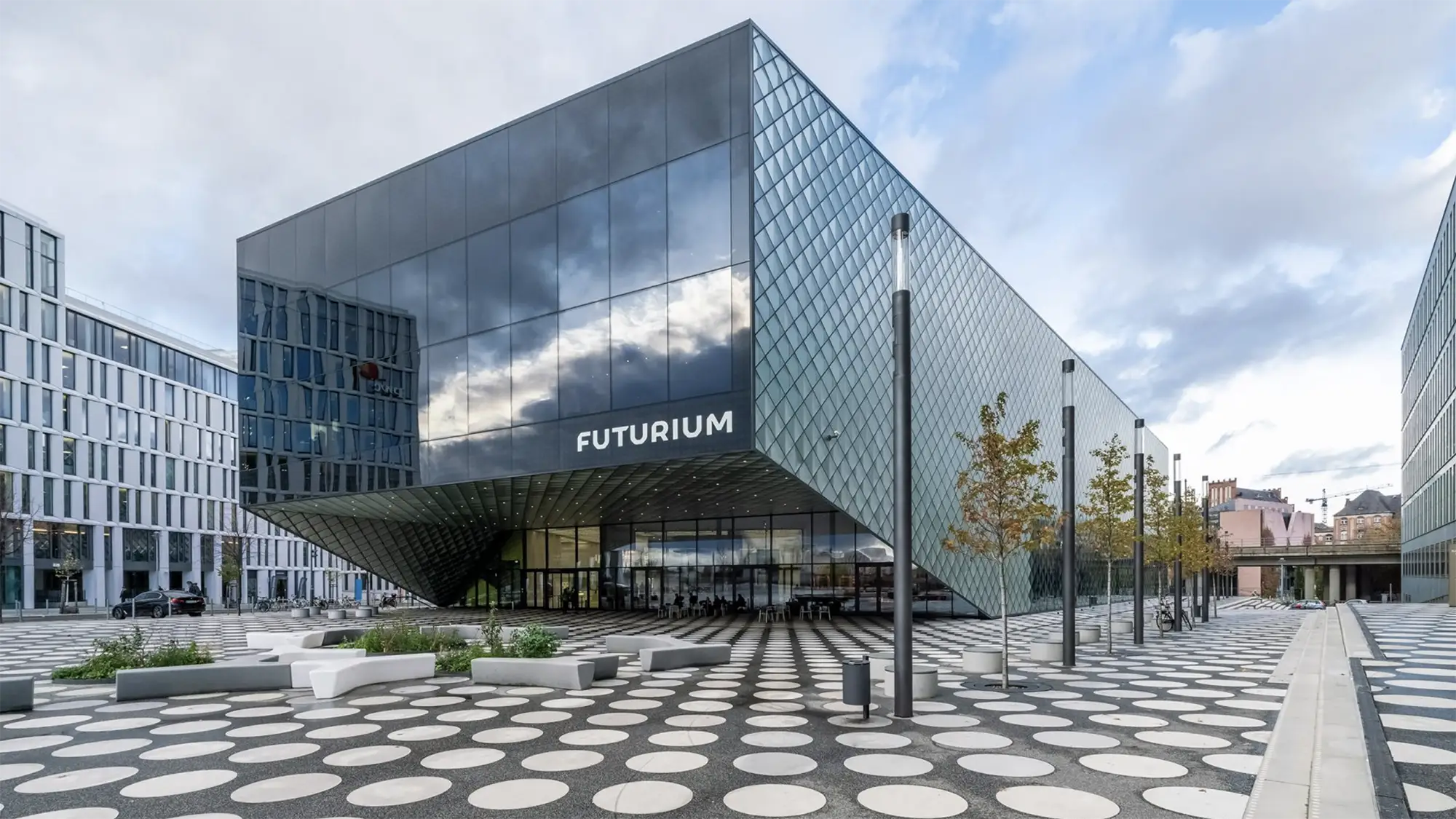
Futurium Berlin – Renewal of light stretching foils from Barrisol
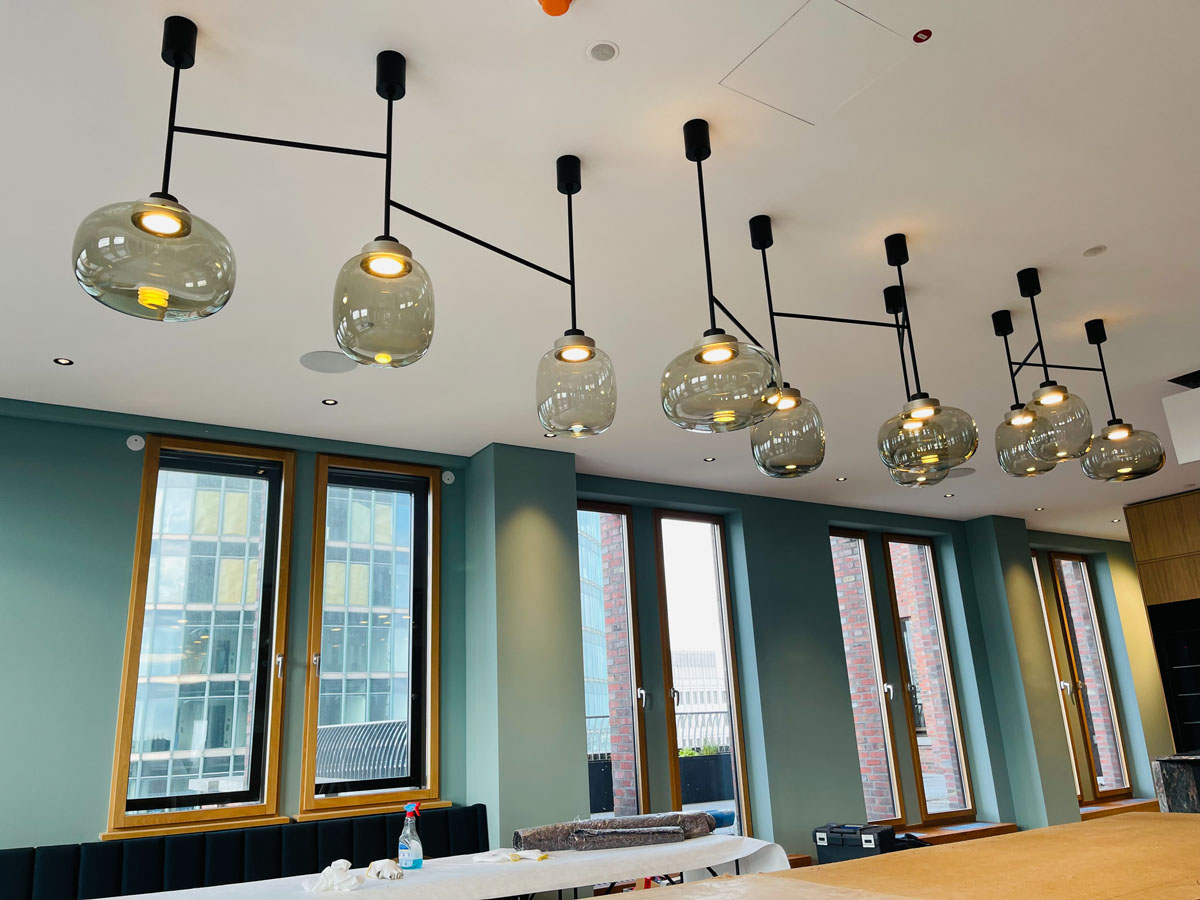
FDB-Potsdammer Platz 1 – Kolhoff Haus
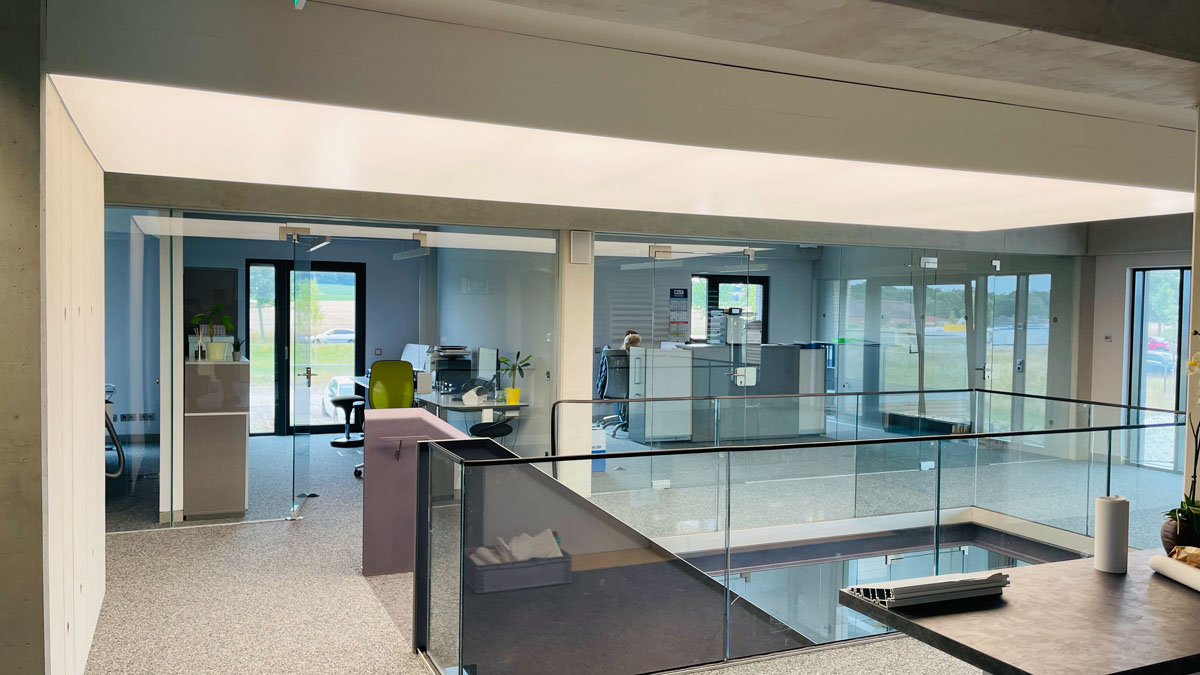
Barrisol Light Ceiling Tunable White

Antler lamp – Restaurant “deutsch” – Frankfurt Airport
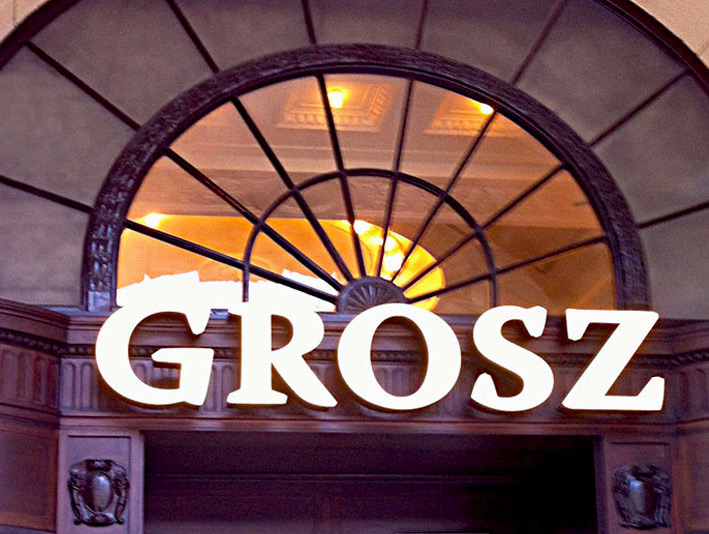
Grosz Restaurant

“Windmill” – OLED special luminaires – wall and ceiling luminaires

Pradus Medical Centre Düsseldorf

“Victoria Yards” – JustFab – in grain silo
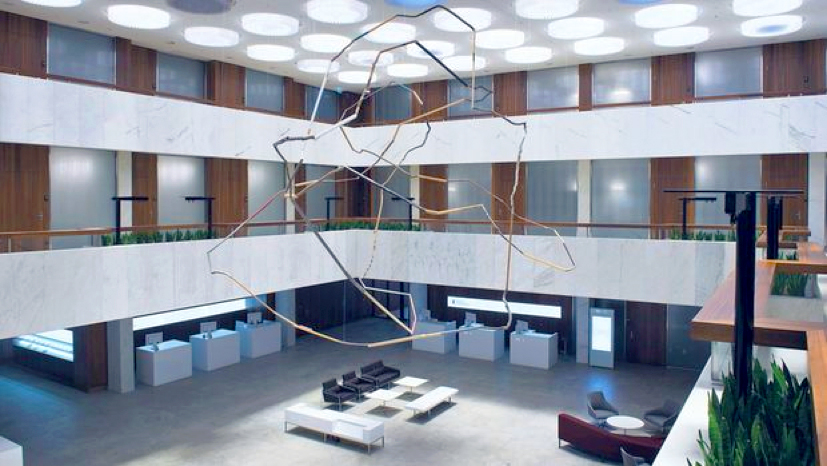
Line luminaire with additional spotlights – Zürcher Kantonalbank
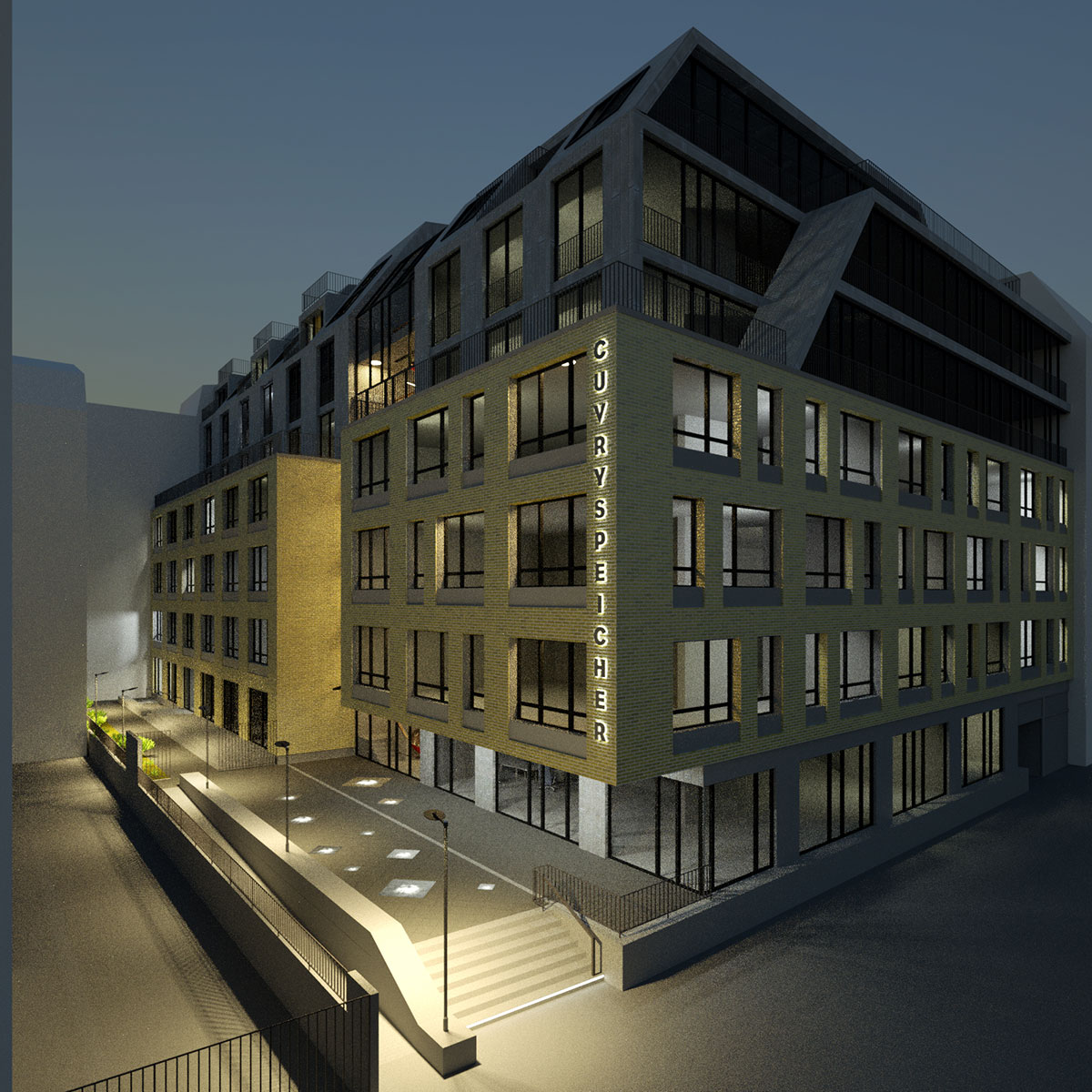
Lighting concept & product selection – Cuvryspeicher – Office and residential building

LED pendant lights – König Kontor GmbH – Hamburg
